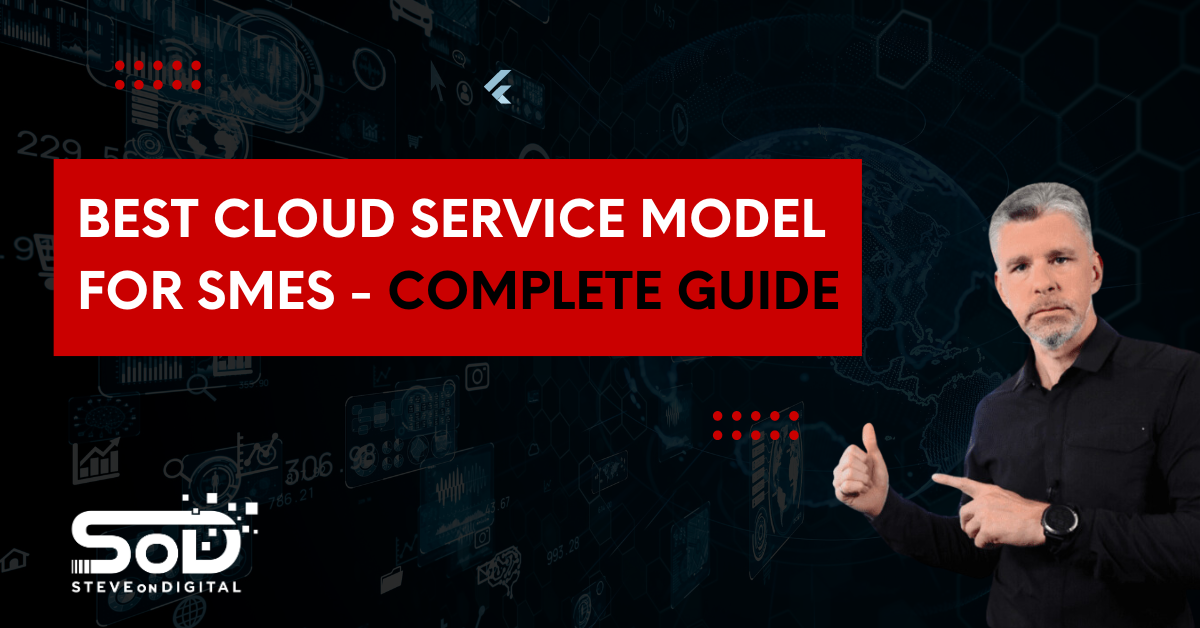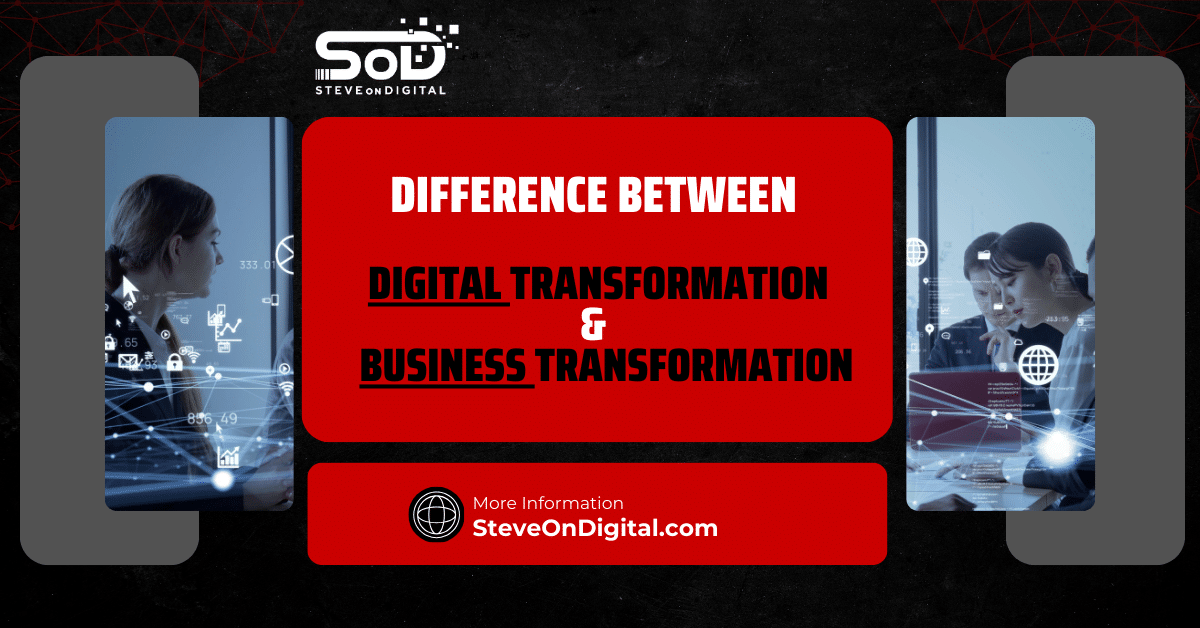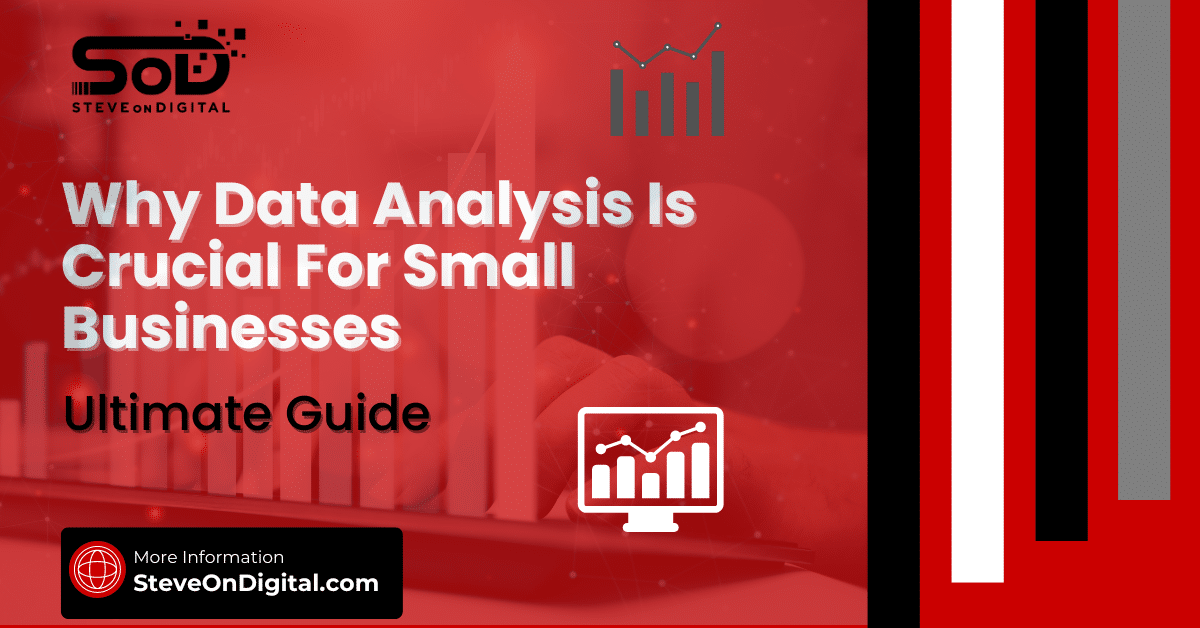As Steve Johnston, a seasoned Digital Transformation Specialist with a robust background in electrical engineering, an MBA, and a master’s in Project Management, I have dedicated my career to empowering small and medium-sized enterprises (SMEs) through digital innovation.
My goal is to guide 1,000,000 business owners and IT directors through the intricate digital landscape, offering actionable advice and insights from real-world experiences.
Cloud Computing For SMEs
Cloud computing has revolutionized the way businesses operate, offering a plethora of benefits that are particularly advantageous for SMEs.
At its core, cloud computing provides accessibility, scalability, and cost-efficiency, three pillars that support the growth and agility of small businesses in today’s digital economy.
Accessibility ensures that vital business data and applications are available anywhere, anytime, as long as there’s an internet connection.
Scalability allows businesses to adjust their resources based on current needs, avoiding unnecessary expenses on infrastructure that isn’t in use.
Most importantly, the cost-efficiency of cloud computing eliminates the need for substantial upfront investments in hardware and software, leveling the playing field for SMEs competing against larger corporations.
Service Models Overview
In the realm of cloud computing, three primary service models stand as the backbone for businesses seeking to harness the cloud: Software as a Service (SaaS), Platform as a Service (PaaS), and Infrastructure as a Service (IaaS).
Each model offers a unique set of resources and services, designed to cater to different business needs and technical capabilities.
SaaS delivers software solutions via the internet, eliminating the need for installations and maintenance.
PaaS provides a platform allowing businesses to develop, run, and manage applications without wrestling with the complexity of building and maintaining the infrastructure typically associated with the process.
Lastly, IaaS offers comprehensive control over computing resources hosted in the cloud, presenting businesses with a virtualized hardware over which they can run whatever operating systems and applications they choose.
The Selection Challenge
Selecting the right cloud service model is critical for SMEs to maximize the benefits of cloud computing.
The decision should be informed by a clear understanding of the business’s specific needs, technical capabilities, and future growth plans.
It’s not just about adopting cloud services; it’s about choosing the model that aligns perfectly with your business strategy to foster growth, innovation, and competitiveness.
Understanding Cloud Services For Small Businesses
Basics Of Cloud Services
Cloud services fundamentally transform how small businesses access and utilize computing resources.
By offering on-demand access to computing resources over the internet, cloud services eliminate the need for SMEs to invest in and manage physical servers or other infrastructure.
This encompasses not just cloud storage, where data can be securely stored and accessed from anywhere, but also the broader spectrum of cloud service models like SaaS, PaaS, and IaaS.
These models provide a range of services from software applications to complete computing platforms and infrastructure, all available over the web with pay-as-you-go pricing.
Importance For SMEs
For SMEs, the shift to cloud computing is not merely a technological upgrade; it’s a strategic transformation that can redefine the entire business landscape.
This transition to cloud services can significantly reduce upfront costs associated with purchasing and maintaining IT hardware and software.
Furthermore, the scalability offered by cloud computing means that SMEs can easily adjust their computing resources to match their business demands, ensuring they’re not paying for idle resources.
Perhaps one of the most compelling benefits of cloud computing for SMEs is the facilitation of remote collaboration.
With data and applications available online, teams can collaborate in real-time from anywhere in the world, breaking down traditional barriers to productivity and innovation.
Comprehensive Exploration Of Cloud Service Models
In my journey as the Digital Transformation Specialist behind SteveOnDigital, I’ve navigated through the vast expanse of cloud computing, applying its principles to help small and medium-sized enterprises (SMEs) achieve significant milestones.
Here, I dive deep into the three main cloud service models, drawing from my own experiences and industry standards to shed light on which cloud service model is best for small businesses.
Let’s explore the core models: Infrastructure as a Service (IaaS), Platform as a Service (PaaS), and Software as a Service (SaaS).
Infrastructure as a Service (IaaS):
Definition And SME Benefits
IaaS offers a virtualized computing infrastructure managed over the internet.
For SMEs, this model is a game-changer.
It eliminates the need for hefty investments in physical hardware, providing businesses with the flexibility to rent computing resources such as servers, storage, and networking capabilities.
The key benefits for SMEs lie in the unparalleled control, customization, and scalability it offers.
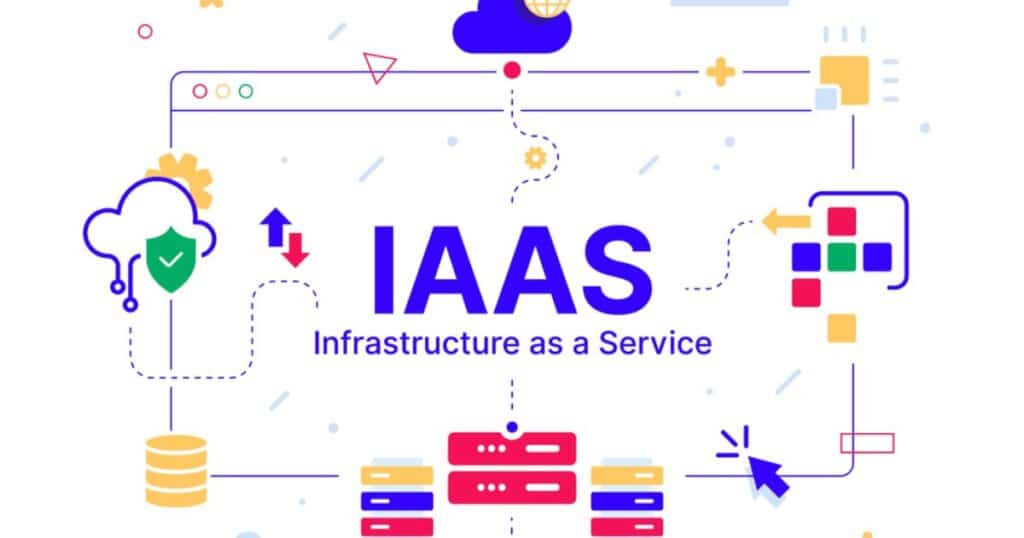
Businesses can tailor their computing resources to meet specific needs and scale these resources up or down based on demand, ensuring cost efficiency and agility.
Examples And Ideal Use Cases
Prominent examples of IaaS include Microsoft Azure and Amazon Web Services (AWS).
These platforms are ideally suited for businesses that require specific control over their computing environment and have the IT expertise to manage and configure their infrastructure.
IaaS is perfect for companies looking to run high-performance applications, store large volumes of data, or have unique security requirements.
Platform as a Service (PaaS):
Definition And Ideal Use
PaaS provides a framework for developers to build upon and create customized applications.
This cloud service model offers a development platform and a set of tools to simplify the process of coding, testing, and deployment of applications.

The beauty of PaaS lies in its pre-configured features and ease of app deployment, allowing developers to focus on the creative side of application development without worrying about the underlying infrastructure.
Examples And Considerations
Google App Engine and Azure App Service stand out as prime examples of PaaS.
These platforms cater to businesses with some level of technical know-how and those looking to develop, run, and manage applications without the complexity of building and maintaining the infrastructure.
PaaS is ideal for companies aiming to create customized applications or those that require a collaborative environment for multiple developers.
Software as a Service (SaaS):
Definition And Advantages For SMEs
SaaS revolutionizes software usage by providing access to applications over the internet, on a subscription basis.
This model eliminates the need for installations, updates, and maintenance from the user’s end, shifting the responsibility to the service provider.
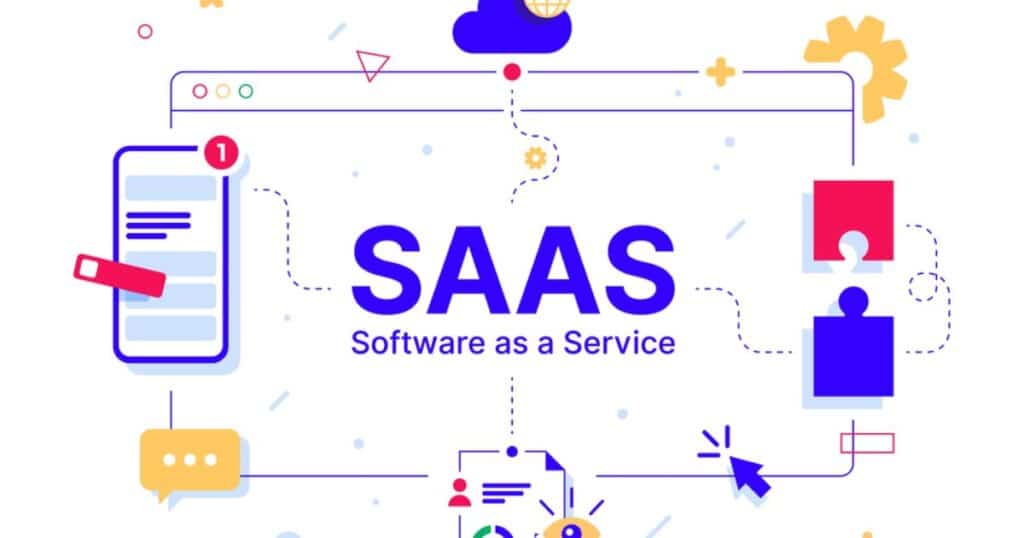
For SMEs, SaaS offers numerous advantages, including ease of use, affordability, and the elimination of upfront costs typically associated with software purchases.
Furthermore, SaaS solutions are inherently scalable and accessible from anywhere, providing businesses with flexibility and operational efficiency.
Examples And Suitability
Examples of SaaS applications include Google Workspace for collaboration and productivity tools, and Salesforce for customer relationship management.
These applications are perfectly suited for SMEs looking for immediate software solutions without the burden of IT maintenance or significant initial investments.
SaaS is ideal for businesses with limited technical expertise or those looking to quickly implement solutions to improve operational efficiency and collaboration.
Comparison Of Cloud Service Models
| Feature | IaaS | PaaS | SaaS |
| Definition | Infrastructure as a Service | Platform as a Service | Software as a Service |
| Control Level | High (over infrastructure) | Medium (over environment configuration) | Low (limited to software use) |
| Technical Expertise | High | Medium | Low |
| Ideal Use Cases | Customizable environments, large-scale data processing | Application development, testing | Out-of-the-box software solutions, collaboration tools |
| Examples | Microsoft Azure, AWS | Google App Engine, Azure App Service | Google Workspace, Salesforce |
Strategic Cloud Service Selection For Small Businesses
In the digital transformation journey, small and medium-sized enterprises (SMEs) stand to gain immensely from the strategic selection of cloud services.
Cloud computing, offering a range of services from cloud storage to complex cloud computing infrastructure, is a linchpin for SMEs aspiring to streamline operations and foster innovation.
The choice between Software as a Service (SaaS), Platform as a Service (PaaS), and Infrastructure as a Service (IaaS) hinges on a thorough understanding of business needs, data management requirements, and scalability ambitions.
SaaS solutions, such as Google Workspace and Salesforce, offer streamlined, web-delivered software applications that cater to immediate business needs without the complexities of on-premises solutions.
For those looking to forge their path in application development, PaaS solutions like Google App Engine provide a conducive environment, freeing developers from the intricacies of the underlying infrastructure.
Meanwhile, IaaS platforms, exemplified by Microsoft Azure and Amazon Web Services (AWS), grant businesses complete control over their computing environment, ensuring data security and operational flexibility.
Selecting The Right Cloud Service Model
As the owner and author of SteveOnDigital, I’ve had the unique opportunity to explore the depths of cloud computing and its implications for small and medium-sized enterprises (SMEs).
The journey through digital transformation has shown me the critical importance of selecting the appropriate cloud service model to meet specific business needs.
Here’s how I’ve come to understand the process of aligning those needs with the right cloud model, drawing from my experiences and the broad spectrum of options available in the cloud computing landscape.
Analyzing Business Needs:
One of the initial steps in the journey towards cloud adoption is a thorough analysis of your core business requirements.
This analysis should consider several key factors, including data storage needs, the nature of application development you’re engaged in, and the level of collaboration your team requires.
Equally important is the evaluation of data sensitivity and the security measures necessary to protect this data.
For SMEs, where resources may be limited, assessing the in-house capabilities for IT management is crucial.
This assessment will help determine the extent of external support your business will need from a cloud service provider.
It’s about understanding where your business stands today and envisioning where you want it to be in the future, all through the lens of technological capabilities and requirements.
Matching Needs With Models:
Once you’ve laid out your business needs, the next step is to match these needs with the appropriate cloud service model.
Each model offers distinct benefits and caters to different aspects of business operations.
Here’s how I see the fit for SMEs based on their specific requirements:
SaaS For Basic Needs:
For SMEs that require access to software without the hassle of installation, updates, and maintenance, Software as a Service (SaaS) is the go-to model.
SaaS offers ready-to-use software solutions through a straightforward subscription model.
This approach is ideal for businesses looking for quick deployment of productivity tools, CRM systems, or other software applications without significant IT burdens.
Examples like Google Workspace and Salesforce have shown how SaaS can streamline operations and improve efficiency without requiring a large IT team.
PaaS For Development:
Platform as a Service (PaaS) is best suited for businesses focused on developing custom applications.
PaaS provides a development platform along with a set of tools that simplify the complexities of infrastructure management, allowing businesses to concentrate on creating software solutions.
This model is a boon for SMEs with some technical know-how, enabling them to leverage platform tools for app development without the overhead of managing the infrastructure.
Services like Google App Engine and Azure App Service exemplify how PaaS can facilitate the development process, providing a robust environment for innovation.
IaaS For Control And Scalability:
Infrastructure as a Service (IaaS) is recommended for businesses that demand a high degree of control over their computing environment and require scalability to meet fluctuating demands.
IaaS offers a virtualized computing infrastructure that SMEs can tailor to their specific needs, providing the flexibility to scale resources up or down as required.
This model is particularly beneficial for businesses with considerable IT expertise, allowing them to customize and manage their computing resources extensively.
Microsoft Azure and Amazon Web Services (AWS) are notable examples of IaaS, offering SMEs the tools to build a highly customizable and scalable cloud environment.
Business Needs And Cloud Model Alignment
| Business Need | Recommended Cloud Service Model |
| Scalable data storage | IaaS |
| High-level application development | PaaS |
| Ready-to-use software | SaaS |
| Custom security requirements | IaaS |
| Rapid deployment of applications | PaaS |
| Minimal technical management | SaaS |
| Cost-effective scaling | IaaS / PaaS |
Decision-Making Insights
In navigating the digital landscape for small and medium-sized enterprises (SMEs), understanding the nuances of each cloud service model and how it aligns with your business’s unique strategies, capabilities, and growth trajectories is crucial.
My experience in steering SteveOnDigital through various technological innovations has equipped me with insights into the decision-making process surrounding cloud adoption.

Here’s a deeper look into business-specific considerations, data security, and budgeting that should guide your choice of cloud service model.
Business-Specific Considerations
Each cloud service model comes with its set of features that can either be a boon or a bane, depending on your business’s specific needs, strategies, and technical capacities.
For instance, if your business strategy revolves around leveraging big data analytics, you might find the scalability and control offered by Infrastructure as a Service (IaaS) invaluable.
Conversely, if you’re focusing on developing unique software solutions without the burden of managing the underlying infrastructure, Platform as a Service (PaaS) could be your alley.
It’s also essential to consider your team’s technical expertise and the level of control you wish to maintain over your computing environment.
These considerations will help you align your choice of cloud service model with your business’s long-term growth plans and operational needs.
Data Security And Compliance
Data security and compliance with relevant regulations cannot be overstated in today’s digital age, where data breaches can have significant financial and reputational repercussions.
Opting for a cloud service model that offers robust security features and compliance with industry standards is non-negotiable.
For businesses handling sensitive data, considering a model that allows for enhanced security measures and offers compliance with data protection regulations is crucial.
Whether it’s the built-in security features of Software as a Service (SaaS) platforms or the customizable security configurations of IaaS, ensuring that your chosen model aligns with your data security and compliance needs is paramount.
Budgeting And Cost Effectiveness
The financial implications of adopting a cloud service model are a pivotal consideration for SMEs.
It’s essential to evaluate each model not just on the upfront costs but also on its long-term scalability and operational costs.
SaaS might offer the most cost-effective solution for businesses looking for off-the-shelf software solutions with minimal upfront investments.
In contrast, IaaS and PaaS could provide better value for businesses planning to scale their operations significantly, thanks to their pay-as-you-grow pricing structures.
A thorough cost-benefit analysis, considering both current and future needs, will help ensure that your investment in cloud computing is both strategic and cost-effective.
Financial Implications Of Cloud Service Models
| Cloud Service Model | Initial Investment | Operational Cost | Scalability Cost | Ideal for Businesses That… |
| IaaS | Medium to High | Variable | Pay-as-you-go | Require flexibility and control over their infrastructure |
| PaaS | Low to Medium | Medium | Pay-as-you-go | Develop custom applications without infrastructure hassles |
| SaaS | Low | Fixed (Subscription) | N/A | Need ready-to-use software with minimal setup |
Conclusion
Navigating the selection of the right cloud service model for your SME is a journey that requires careful consideration of your business’s unique needs, strategies, and technical capacities.
As we’ve explored, each model offers distinct advantages, from the turnkey solutions of SaaS to the customizable and scalable environments of IaaS and PaaS.
The decision should be informed by a deep dive into business-specific considerations, a rigorous assessment of data security and compliance needs, and a thorough evaluation of budgeting and cost implications.
As the guiding force behind SteveOnDigital, I encourage SMEs to not shy away from seeking professional advice in crafting a tailored cloud strategy.
Consulting experts can provide invaluable insights into selecting a cloud service model that aligns with your business objectives, ensures data security, and is cost-effective in the long run.
Remember, the goal is not just to adopt cloud computing but to leverage it as a strategic tool for growth, innovation, and competitive advantage in the digital era.

